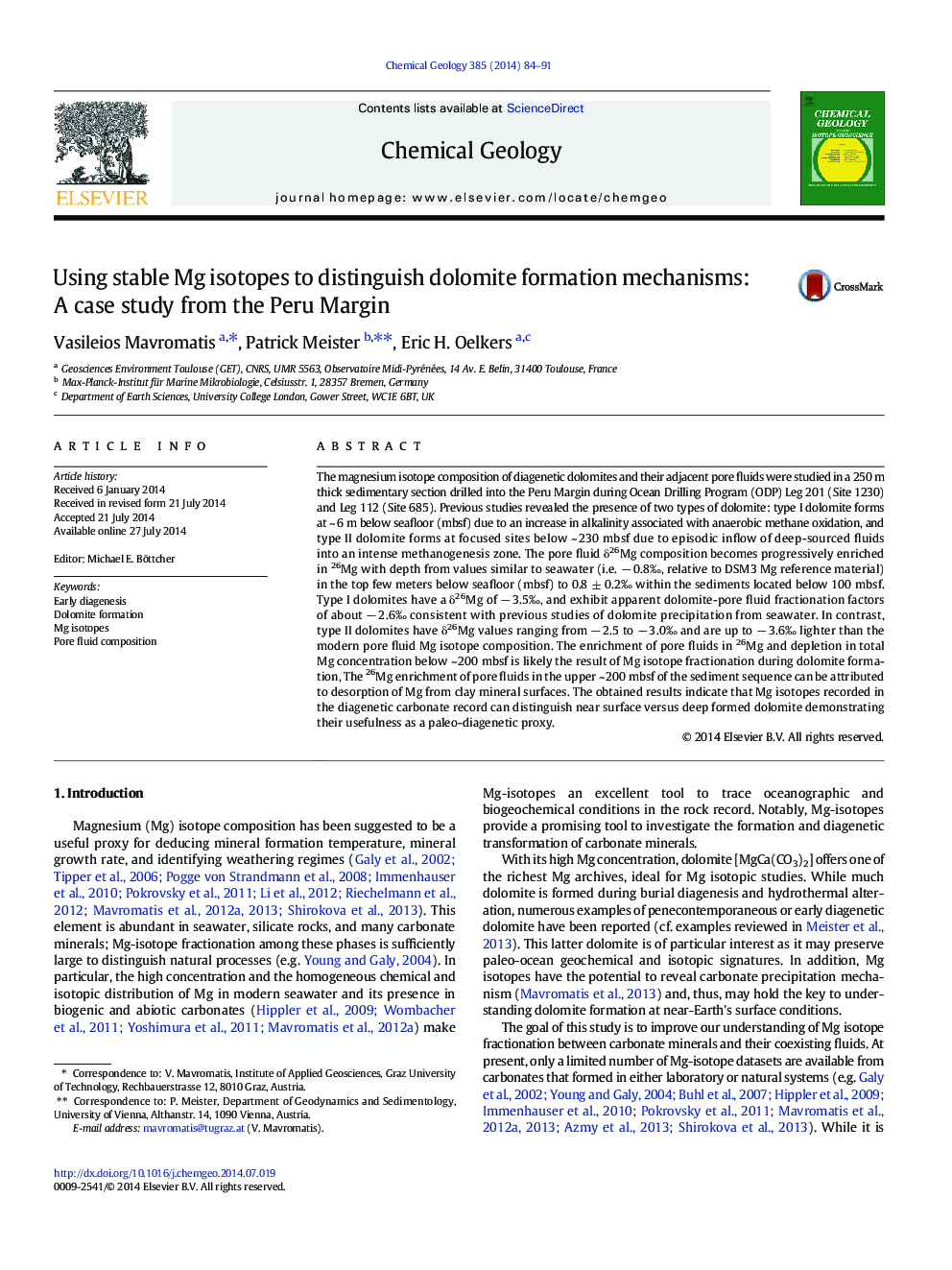| کد مقاله | کد نشریه | سال انتشار | مقاله انگلیسی | نسخه تمام متن |
|---|---|---|---|---|
| 4698714 | 1637587 | 2014 | 8 صفحه PDF | دانلود رایگان |

• Mg isotope composition of authigenic dolomites and pore fluids was measured.
• Two types of dolomite are present in this Site of Peru Margin.
• They exhibit distinguishable Mg and C isotope composition.
The magnesium isotope composition of diagenetic dolomites and their adjacent pore fluids were studied in a 250 m thick sedimentary section drilled into the Peru Margin during Ocean Drilling Program (ODP) Leg 201 (Site 1230) and Leg 112 (Site 685). Previous studies revealed the presence of two types of dolomite: type I dolomite forms at ~ 6 m below seafloor (mbsf) due to an increase in alkalinity associated with anaerobic methane oxidation, and type II dolomite forms at focused sites below ~ 230 mbsf due to episodic inflow of deep-sourced fluids into an intense methanogenesis zone. The pore fluid δ26Mg composition becomes progressively enriched in 26Mg with depth from values similar to seawater (i.e. − 0.8‰, relative to DSM3 Mg reference material) in the top few meters below seafloor (mbsf) to 0.8 ± 0.2‰ within the sediments located below 100 mbsf. Type I dolomites have a δ26Mg of − 3.5‰, and exhibit apparent dolomite-pore fluid fractionation factors of about − 2.6‰ consistent with previous studies of dolomite precipitation from seawater. In contrast, type II dolomites have δ26Mg values ranging from − 2.5 to − 3.0‰ and are up to − 3.6‰ lighter than the modern pore fluid Mg isotope composition. The enrichment of pore fluids in 26Mg and depletion in total Mg concentration below ~ 200 mbsf is likely the result of Mg isotope fractionation during dolomite formation, The 26Mg enrichment of pore fluids in the upper ~ 200 mbsf of the sediment sequence can be attributed to desorption of Mg from clay mineral surfaces. The obtained results indicate that Mg isotopes recorded in the diagenetic carbonate record can distinguish near surface versus deep formed dolomite demonstrating their usefulness as a paleo-diagenetic proxy.
Journal: Chemical Geology - Volume 385, 14 October 2014, Pages 84–91